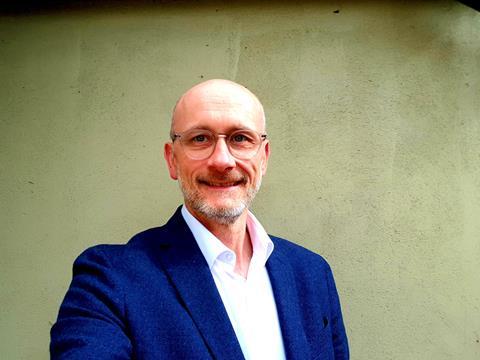Pressure to meet national targets and set ambitious organisational goals has seen a huge push from the public and private sectors over the past few years, getting us closer to a cleaner, greener, net zero future. But, says Steven Wade, we must work together to make sure that what we do is really best for the environment

When it comes to decarbonisation – and meeting net zero targets – the focus is firmly set on reducing carbon emissions and offsetting any unavoidable excess. While this is obviously a valuable endeavour, it is important that we also plan for a sustainable and resilient future, which means casting the net much wider.
A good example is tree planting. This is a big part of many net zero strategies – offsetting is often the only way to meet steep targets.
But, if care isn’t taken on the types of trees planted, or where they are planted for instance, such interventions could have negative impacts on nature and exacerbating rather than mitigating the effects of climate change, despite ticking the net zero box.
It is clear that an integrated approach is needed to make sure we do what is really best for the environment.
The effects of climate change are already being felt, and they will continue to get worse before they get better, no matter what we do
Minimising emissions is absolutely essential to slow climate change, and prevent more frequent and severe impacts in the future. But it cannot be viewed in isolation.
Climate change is already making its mark, harming communities the world over, through extreme weather events, rising temperatures and increasing sea levels. The effects of climate change are already being felt, and they will continue to get worse before they get better, no matter what we do.
Yes, we need to address emissions, but it will be some time before net zero action, no matter how effective, begins to alleviate the real impact of the climate emergency. In fact, in climate models projected rates of warming for different emissions scenarios only significantly diverge after the 2050s.
In parallel with serious decarbonisation efforts, it is crucial that we ensure current and future assets can withstand the uncertain climate ahead: we need to embed climate resilience into our strategic planning and net zero programmes now with urgent actions to deal with floods, heatwaves and droughts
The urgency of building climate resilience into future planning is being picked up, but slowly, and often in a piecemeal manner
It is likely that net zero strategies have developed at a pace thanks to an increasingly regulated environment, in addition to growing pressure from public stakeholders and, importantly, investors, who demand transparent and targeted net zero strategies. Without similar incentives and obligations in place for climate resilience, there’s a risk much of our infrastructure will not be able to cope in the coming years.
The urgency of building climate resilience into future planning is being picked up, but slowly, and often in a piecemeal manner, with many strategies existing in silos, missing opportunities and failing to piggyback on more formalised and better-funded net zero planning.
>> Also read: Things can only get hotter so we must tackle overheating in buildings
>> Also read: How to save the world
The Taskforce on Climate Related Financial Disclosures (TCFD) provides hope of raising the profile of climate resilience by encouraging a strategic approach that includes net zero and climate resilience, and adopts a more balanced approach to considering governance and actions to address both climate transition risks and climate physical risks.
We also need to consider net zero strategies as opportunities to align net zero with other urgent sustainability goals including climate adaptation, biodiversity and equality while momentum is high.
Tackling various strands of work simultaneously – and at the earliest possible stage of project concept design – is the key here; adopting upstream thinking, where all risk areas are considered right at the start of a project, to come up with an optimal solution that addresses all the risks combined.
A combined strategy will create clear lines of sight to potential co-benefits, relating to biodiversity net gain, carbon sequestration or community wellbeing
Failure to consider climate risks and opportunities at the outset could lead to costly mistakes or climate maladaptation. For example, you would not want to spend huge amounts on a carbon-neutral heat pump system located on a potential flood plain that assumes the same frequency of very cold winters or that fails under higher loads due to higher summer temperatures.
By thinking holistically at the design stage about net zero, climate resilience and other sustainability issues, costly delays, changes and retrofits can be avoided later down the line, saving money, increasing the efficiency of implementation and ultimately creating more effective interventions.
In addition to considering all risks up front, a combined strategy will create clear lines of sight to potential co-benefits, relating to biodiversity net gain, carbon sequestration or community wellbeing, for example, all of which contribute to the balance needed for a better future.
It will also bring to the fore any additional interventions that could be conducted during periods of disruption caused by large-scale decarbonisation projects, such as heat pump excavation.
It is clear that net zero and climate resilience activities go hand-in-hand. In a climate emergency, bringing strands of work together is exactly what we need to do in order to capitalise on multi-benefit outcomes for our environment, for the long-term.
While the TCFD should encourage transparency and create the pressure needed to usher the industry in the right direction, we need to bring climate resilience into focus by raising expectations, securing investment and increasing the quality and breadth of climate resilience activities.
Only through effective collaboration and the pooling of knowledge, resources and funding can we achieve tangible results that will make a meaningful contribution to the resilience and sustainability of our planet and its people.
Steven Wade is technical director for climate resilience at Atkins




























No comments yet